Key takeaways:
- Shooting in RAW format captures more detail and offers greater flexibility in post-production compared to JPEG.
- RAW files allow for fine-tuning of exposure and color adjustments without sacrificing image quality.
- Key settings for RAW photography include proper exposure, manual white balance, and choosing the right shooting mode for creative control.
- Challenges include large file sizes, a steep learning curve, and the time-consuming editing process.
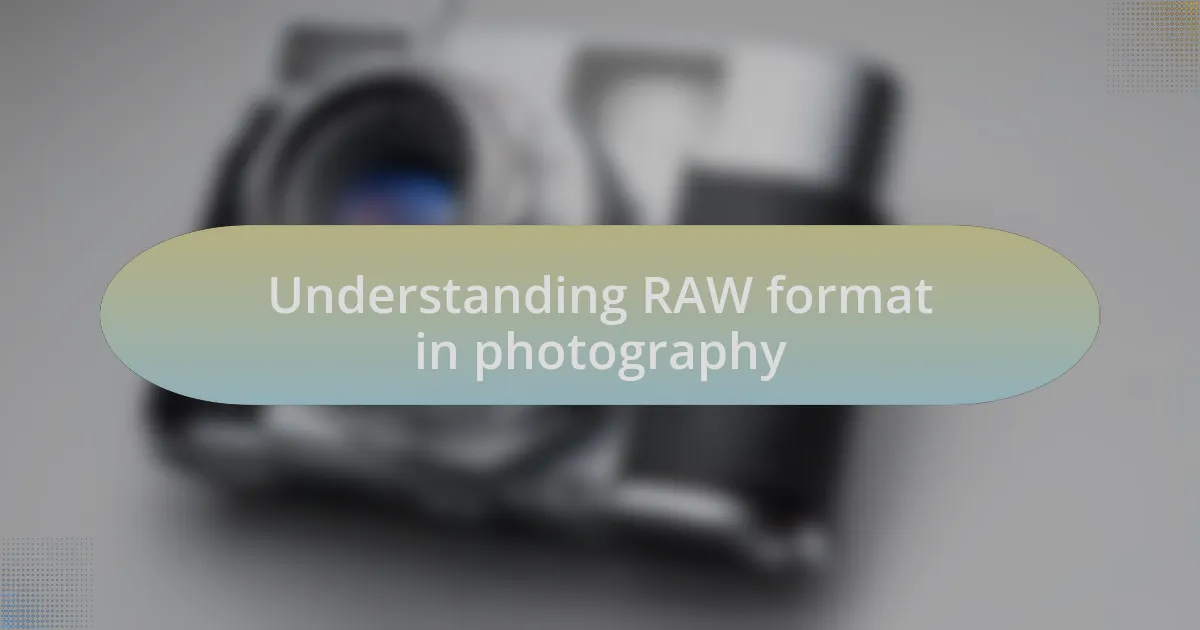
Understanding RAW format in photography
Shooting in RAW format captures images with far more detail than JPEG, which is crucial for high-quality editing. I remember the first time I edited a RAW file; the ability to recover highlights and shadows transformed my images in ways I hadn’t anticipated. Have you ever felt the frustration of losing detail in a bright sky? With RAW, that sky stays intact.
The reason RAW files are so powerful lies in their unprocessed nature. Each file retains all the data from your camera’s sensor, allowing for greater flexibility in post-production. I often find myself experimenting during editing, pushing colors and contrasts farther than I thought possible. Have you experienced the joy of seeing an image evolve as you tweak it?
Additionally, while RAW files take up more space on your memory card, they are worth every megabyte. It’s like having a safety net for your creative vision. The first time I had to choose between space and quality, I panicked but chose RAW, and I’ve never looked back. What about you? Would you rather play it safe and limit your creative possibilities?
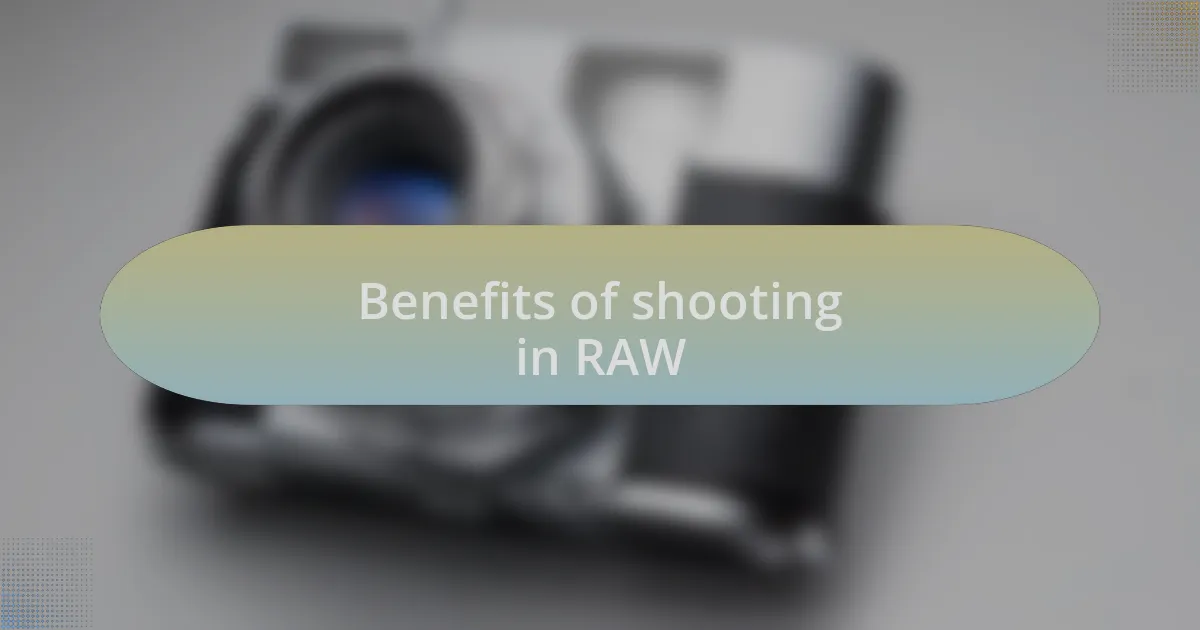
Benefits of shooting in RAW
Shooting in RAW offers an unparalleled level of detail that simply can’t be matched. I recall a stunning landscape shot where the colors were vivid, but the dynamic range needed enhancement. When I opened the RAW file, I found I could restore the richness of the colors without introducing noise, something that simply isn’t possible with JPEGs. Have you experienced the satisfaction of perfecting your image through such detailed adjustments?
One of the greatest benefits I’ve encountered with RAW files is the ability to fine-tune exposure. During a recent shoot at sunset, I misjudged the light and ended up with an overexposed foreground. However, opening the RAW file allowed me to decrease the exposure without sacrificing quality. It felt like I had a second chance to capture the moment as I had envisioned it. Isn’t it reassuring to know that RAW provides that safety net for those unexpected situations?
Editing RAW images is like being handed a painter’s palette full of colors. When I edit, I feel liberated; I can adjust white balance, contrast, and saturation with confidence knowing the image can withstand those changes. There’s a thrill that comes with watching an image transform as I apply my artistic vision. Have you ever felt that rush while editing? The freedom to create without limitations is a major reason I now refuse to shoot in anything else.
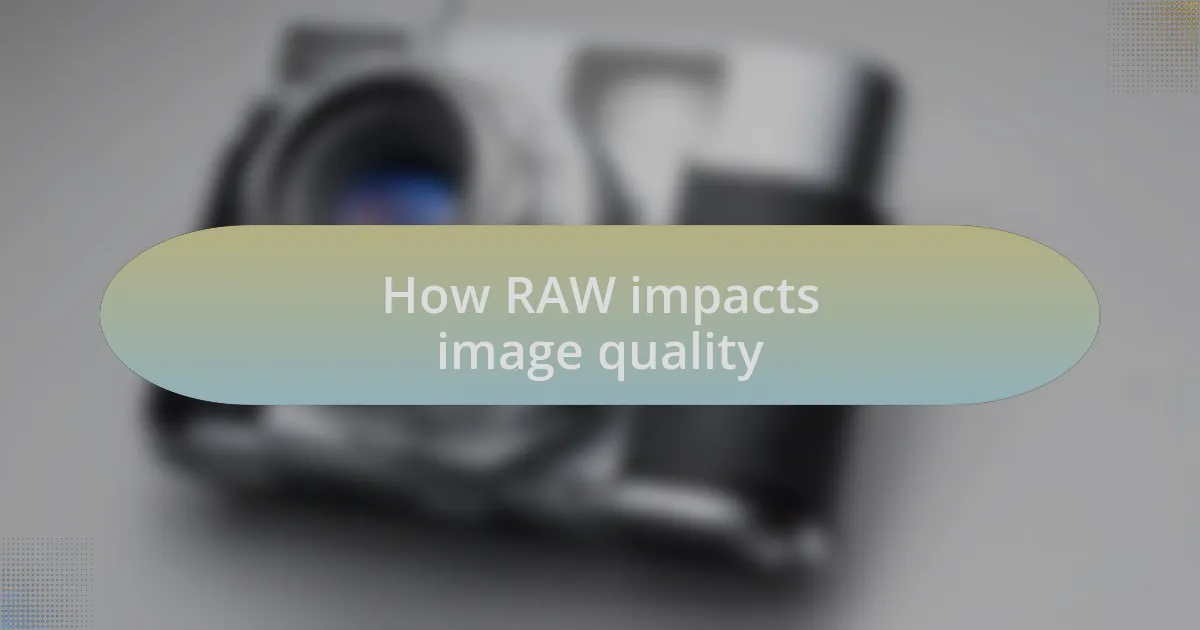
How RAW impacts image quality
Shooting in RAW significantly enhances image quality through its ability to capture a wider dynamic range. I vividly remember a moment when I shot a portrait in both RAW and JPEG in challenging lighting conditions. The RAW version not only showcased the subtleties in skin tones but also retained detail in the shadows, allowing me to make crucial adjustments that breath life into the image. Have you ever noticed how much detail you lose when shooting in compressed formats?
Another aspect that stands out to me is how the additional detail in RAW files translates into smoother gradations in various tones. While working on a landscape capture, I found that the sky, filled with soft gradients, appeared so much richer in the RAW format. It made me realize that every element contributes to the overall impact of the photo. Don’t you think those nuances can elevate an ordinary shot into something extraordinary?
The editing process with RAW files is where I truly see the impact on image quality come alive. I once edited a RAW image where I altered the shadows and highlights drastically. The clarity remained intact, and I was left in awe of how much the image transformed, almost as if the photograph had its own personality coming through. Isn’t it fascinating how RAW gives you that flexibility to explore every detail?
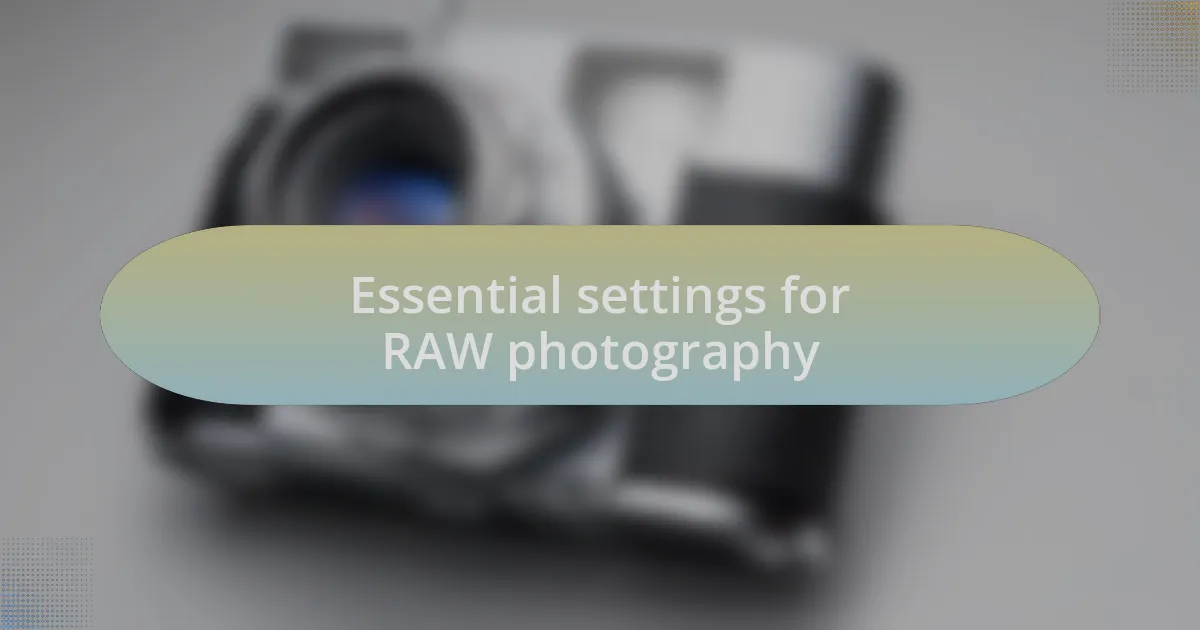
Essential settings for RAW photography
When it comes to essential settings for RAW photography, I’ve learned that the right exposure is crucial. I can recall a time when I pushed myself to shoot a sunset scene. My camera had to be set correctly to capture the vibrant colors without losing highlights. It taught me that slightly overexposing can sometimes yield better results, especially when working with RAW files. Have you experienced that serene glow of the sky right before sunset?
Another important setting is white balance. When I first started shooting in RAW, I often left it on auto, thinking it wouldn’t matter. However, during an outdoor event, I realized how much this setting impacts the mood of an image. I decided to adjust it manually, and the images came out with a warmth that truly reflected the ambiance of that day. It made me wonder: how much of the scene’s emotion can we control just through white balance?
Lastly, I emphasize the importance of the shooting mode. I’ve often found that Aperture Priority gives me more creative freedom, letting me play with depth of field while capturing RAW images. In a recent portrait session, this decision allowed me to softly blur the background, focusing solely on my subject. It felt liberating to know I was in control of my artistic vision. Have you ever felt that balance of creativity and technicality when choosing your settings?
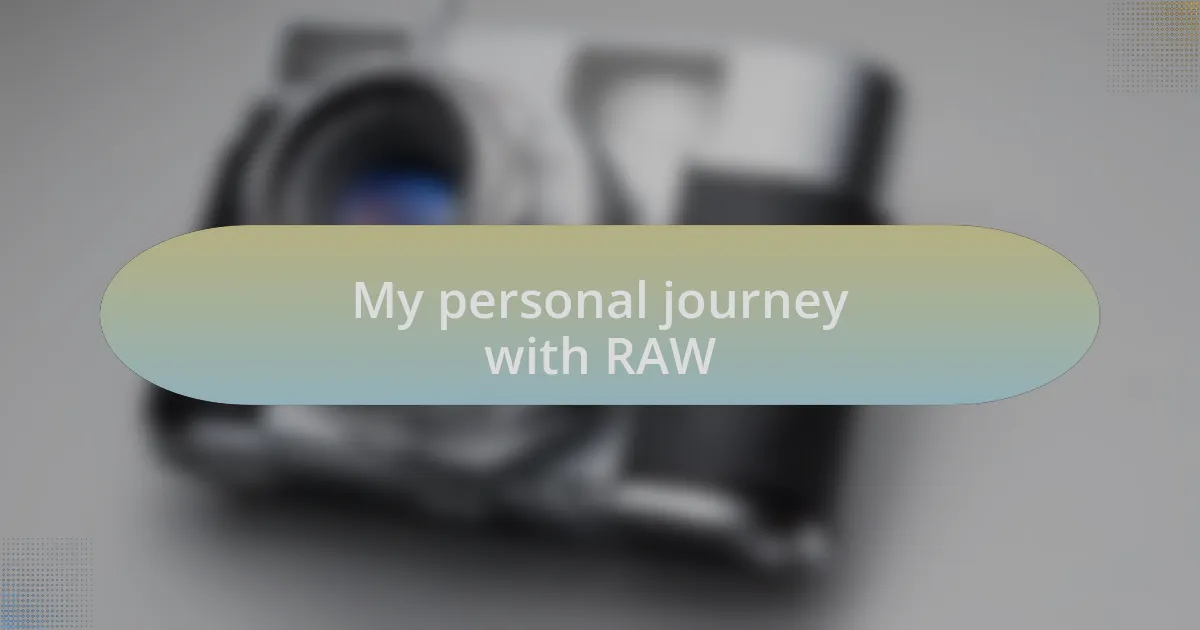
My personal journey with RAW
My journey with RAW photography began somewhat hesitantly. I remember the first time I shot in RAW, feeling overwhelmed by the sheer size of the files and the additional editing needed. Yet, there was something exciting about having that extra data at my fingertips, allowing me to recover details that my JPEGs would have lost. Have you ever felt the thrill of unlocking a hidden detail in your images?
As I grew more comfortable, I learned the importance of editing RAW files. There was a pivotal moment when I edited a landscape photograph from a hiking trip. The sky was dull in the original shot, but with some adjustments, I was able to enhance those colors, bringing the scene back to life. It felt like I was painting with light, reshaping the image to match my vision. Did you ever experience a transformation in your photos that made you see your surroundings differently?
Now, I can’t imagine shooting in any other format. The creative freedom that RAW offers is unmatched. I vividly recall a spontaneous photo walk I took; I experimented with exposure and contrast in post-processing, transforming ordinary snapshots into striking images that I was proud to share. Reflecting on that day, I realize how shooting in RAW has not just changed my photography, but also how I perceive the world around me. What transformations have your photography experiences brought to your life?
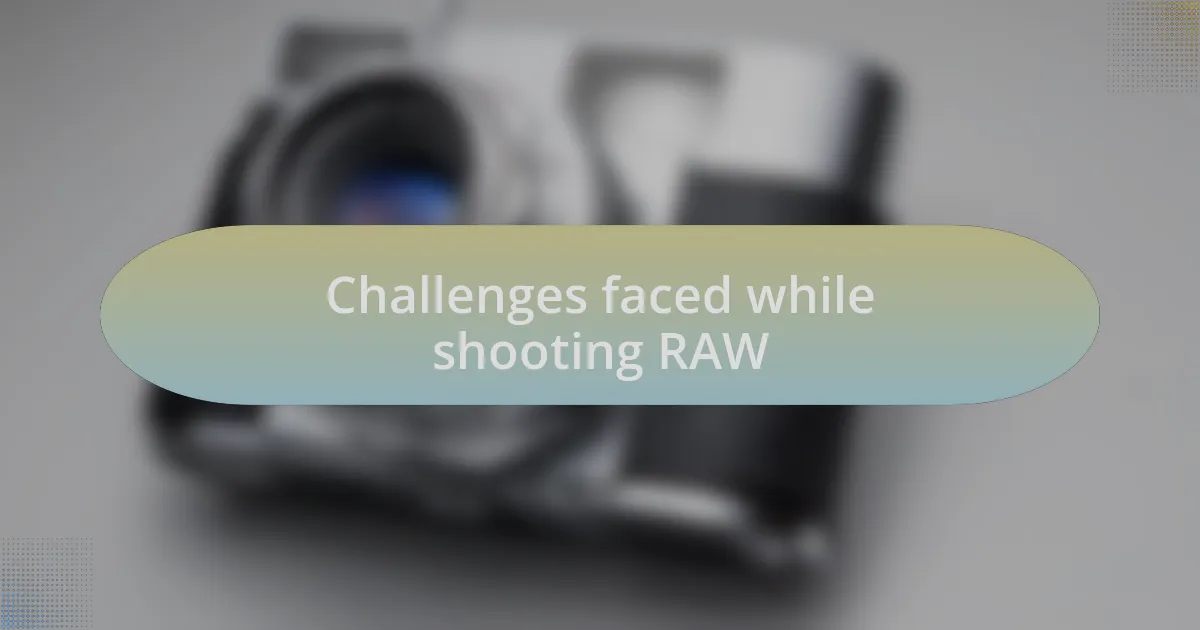
Challenges faced while shooting RAW
Shooting in RAW can bring a few challenges that can be quite daunting at first. I remember during my early days of RAW photography, the sheer size of the files often filled my memory cards rapidly. It made me rethink how many shots I should take during an event, pushing me to be more selective rather than just snapping away. Have you ever felt the pressure of limited space as you aimed to capture the perfect moment?
Then there’s the editing process, which can feel overwhelming. I distinctly recall spending hours perfecting a single image, wrestling with software tools while trying to bring my vision to life. I often found myself questioning whether the time investment was worth it. Do you ever struggle with the balance between the joy of creating and the labor of editing?
Lastly, the learning curve cannot be ignored. I vividly remember missing out on some fantastic shots because I was still trying to grasp the nuances of dynamic range and color correction. This steep learning curve can be frustrating, and it sometimes made me second-guess my decision to shoot in RAW at all. Have you faced the challenge of learning to take full advantage of what RAW has to offer?